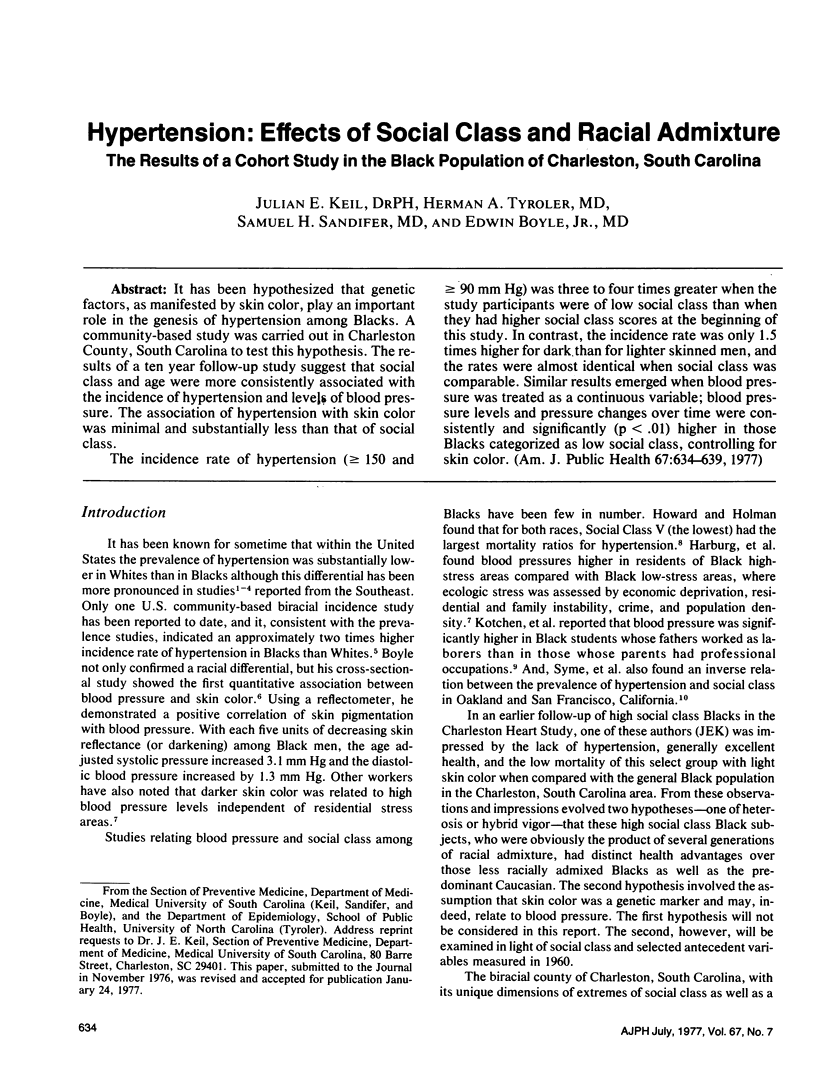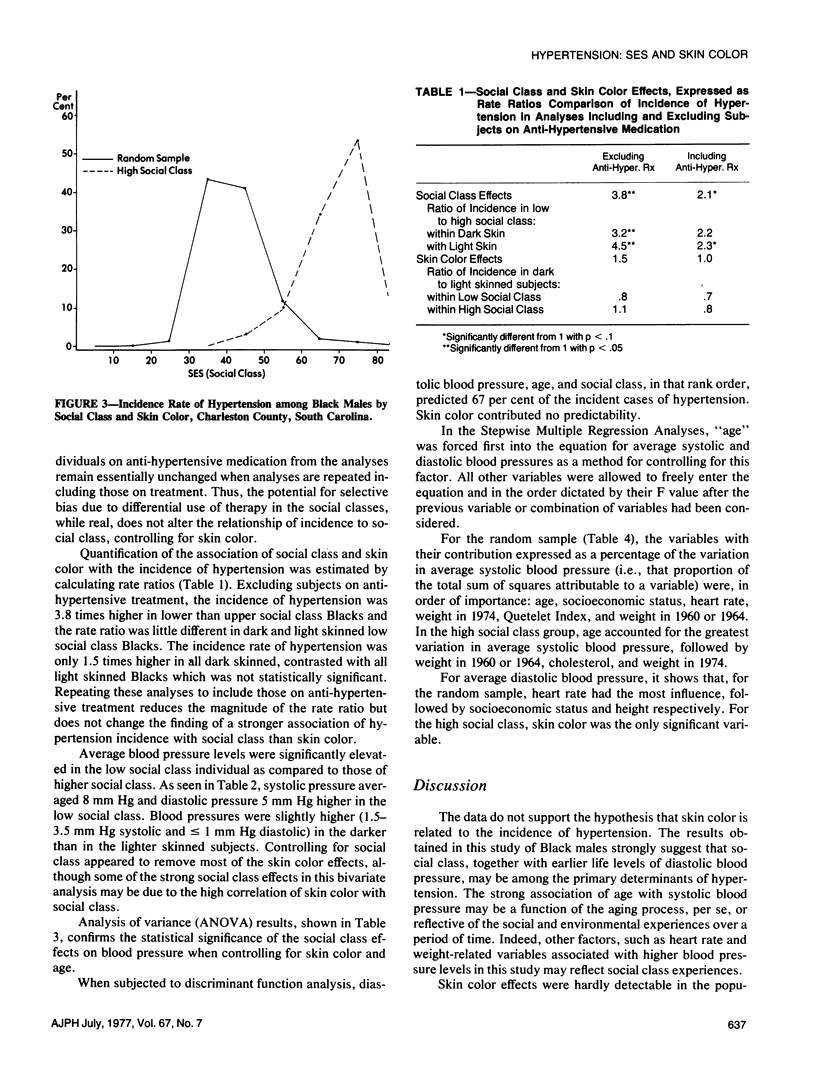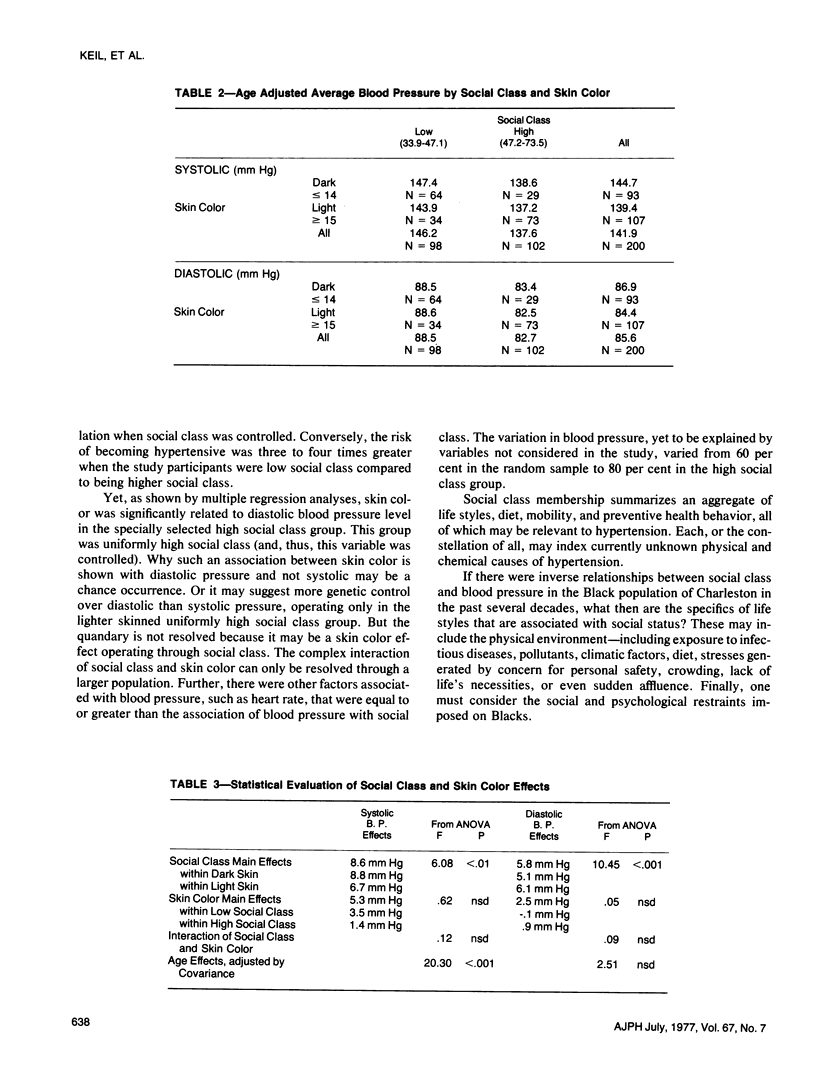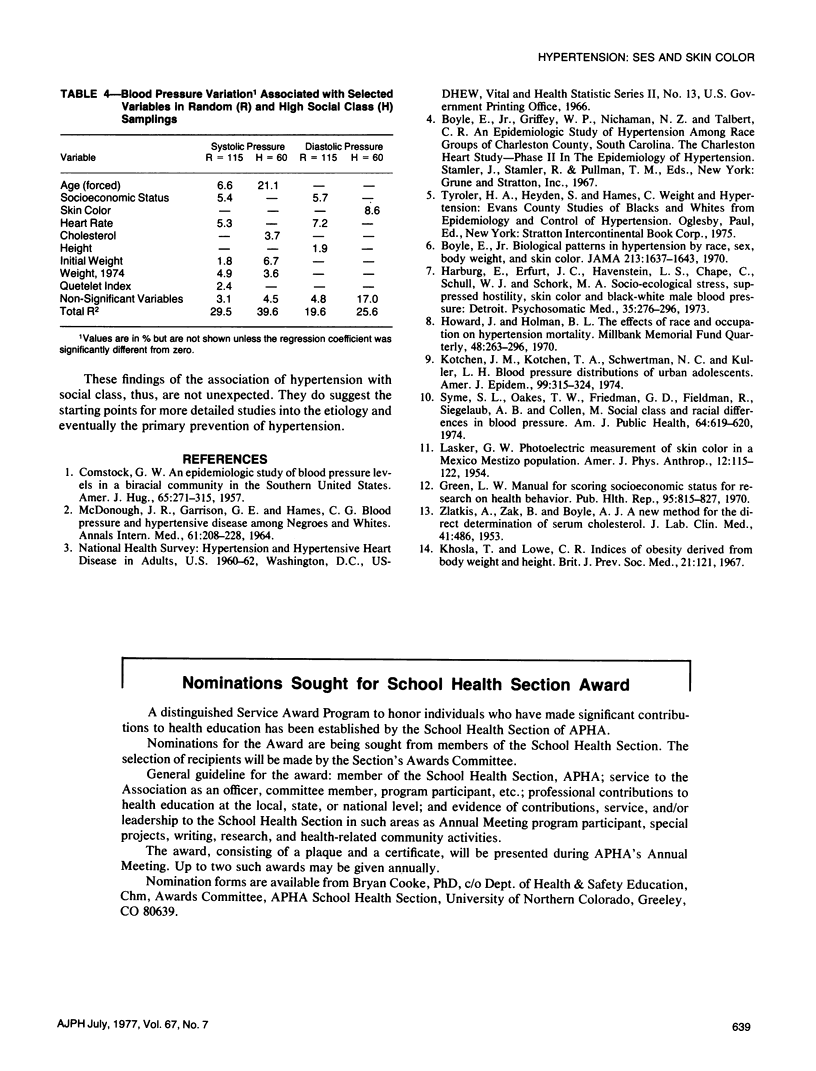Abstract
It has been hypothesized that genetic factors, as manifested by skin color, play in important role in the genesis of hypertension among Blacks. A community-based study was carried out in Charleston Country, South Carolina to test this hypothesis. The results of a ten year follow-up study suggest that social class and age were more consistently associated with the incidence of hypertension and levels of blood pressure. The association of hypertension with skin color was minimal and substantially less than that of social class. The incidence rate of hypertension (larger than or equal to 90 mm Hg) was three to four times greater when the study participants were of low social class than when they had higher social class scores at the beginning of this study. In contrast, the incidence rate was only 1.5 times higher for dark than for lighter skinned men, and the rates were almost identical when social class was comparable. Similar results energed when blood pressure was treated as a continuous variable; blood pressure levels and pressure changes over time were consistently and significantly (p less than .01) higher in those Blacks categorized as low social class, controlling for skin color.
Full text
PDF





Selected References
These references are in PubMed. This may not be the complete list of references from this article.
- Boyle E., Jr Biological pattern in hypertension by race, sex, body weight, and skin color. JAMA. 1970 Sep 7;213(10):1637–1643. [PubMed] [Google Scholar]
- COMSTOCK G. W. An epidemiologic study of blood pressure levels in a biracial community in the Southern United States. Am J Hyg. 1957 May;65(3):271–315. doi: 10.1093/oxfordjournals.aje.a119870. [DOI] [PubMed] [Google Scholar]
- Green L. W. Manual for scoring socioeconomic status for research on health behavior. Public Health Rep. 1970 Sep;85(9):815–827. [PMC free article] [PubMed] [Google Scholar]
- Howard J., Holman B. L. The effects of race and occupation on hypertension mortality. Milbank Mem Fund Q. 1970 Jul;48(3):263–296. [PubMed] [Google Scholar]
- Kotchen J. M., Kotchen T. A., Schwertman N. C., Kuller L. H. Blood pressure distributions of urban adolescents. Am J Epidemiol. 1974 May;99(5):315–324. doi: 10.1093/oxfordjournals.aje.a121616. [DOI] [PubMed] [Google Scholar]
- LASKER G. W. Photoelectric measurement of skin color in a Mexican Mestizo population. Am J Phys Anthropol. 1954 Mar;12(1):115–121. doi: 10.1002/ajpa.1330120122. [DOI] [PubMed] [Google Scholar]
- MCDONOUGH J. R., GARRISON G. E., HAMES C. G. BLOOD PRESSURE AND HYPERTENSIVE DISEASE AMONG NEGROES AND WHITES; A STUDY IN EVANS COUNTY, GEORGIA. Ann Intern Med. 1964 Aug;61:208–228. doi: 10.7326/0003-4819-61-2-208. [DOI] [PubMed] [Google Scholar]
- Syme S. L., Oakes T. W., Friedman G. D., Feldman R., Siegelaub A. B., Collen M. Social class and racial differences in blood pressure. Am J Public Health. 1974 Jun;64(6):619–620. doi: 10.2105/ajph.64.6.619. [DOI] [PMC free article] [PubMed] [Google Scholar]
- ZLATKIS A., ZAK B., BOYLE A. J. A new method for the direct determination of serum cholesterol. J Lab Clin Med. 1953 Mar;41(3):486–492. [PubMed] [Google Scholar]


